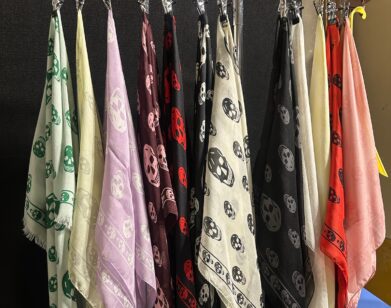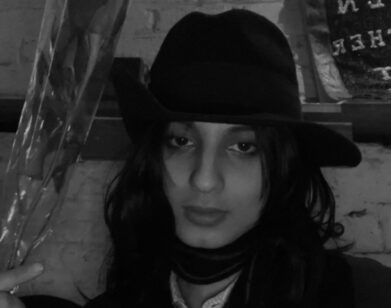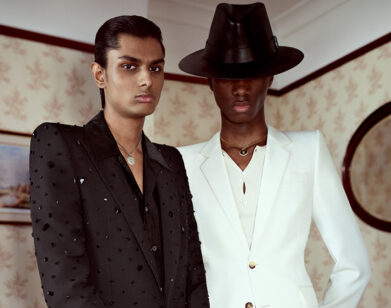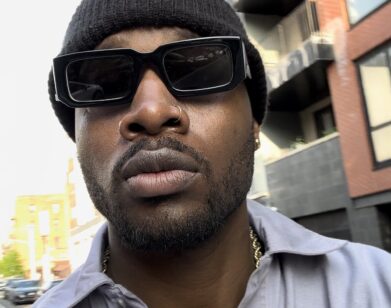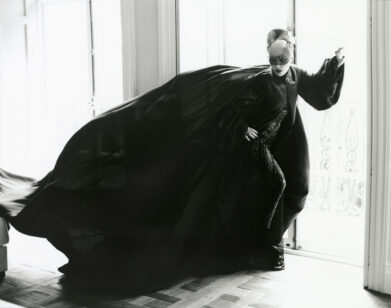Meet the dedicated collectors of fashion’s most coveted labels
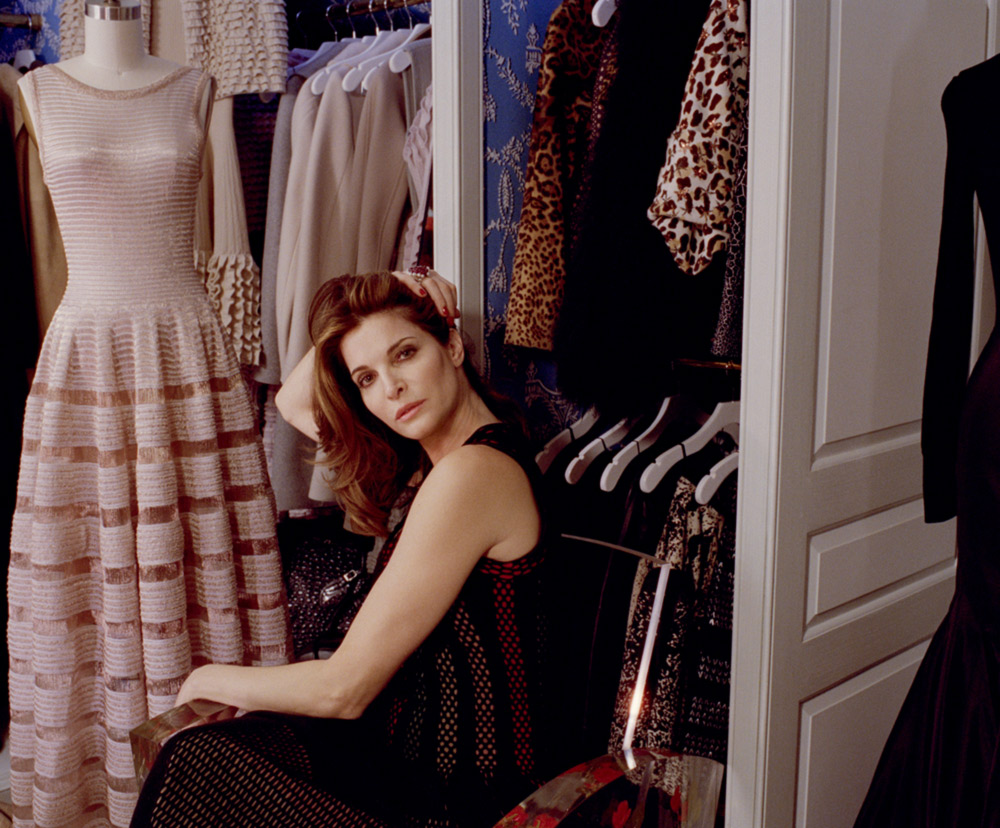
STEPHANIE SEYMOUR AT HOME IN GREENWICH, CONNECTICUT, JANUARY 2018. HAIR: TETSUYA YAMAKATA USING KÉRASTASE/ARTLIST NY. MAKEUP: SEONG HEE PARK USING NARS/JULIAN WATSON AGENCY. MANICURE: NORI/ARTLIST NY. PHOTOGRAPHY ASSISTANT: JOSE ALVARADO.
Why do we collect? Is it nostalgia, desire, or compulsion? For the people on the following pages, it’s all three. Each of them has—with the help of their sartorial savvy (and their checkbooks)—amassed private collections devoted to some of the world’s most celebrated designers. Housed in cavernous closets or whole apartments, and painstakingly catalogued, these are more than wardrobes—they are exhibits, their owners curators rather than everyday consumers. As the fashion world continues to spin forward, these five obsessives remain in relentless pursuit of its past.
STEPHANIE SEYMOUR, SUPERMODEL (above)
COLLECTS: Azzedine Alaïa
SEYMOUR: “I met Azzedine when I was 14 years old. He and Kenzo [Takada] dressed all the girls for the Elite Look of the Year contest. From that moment on, I became an Alaïa girl. I started collecting his work in 1984 and have built two floors of closets at my house in Connecticut specifically to keep all that couture. I work on cataloging it constantly, and I wear everything. My most prized pieces are, of course, the dresses that Azzedine made for my wedding: one for the ceremony and another for the party, each one finished completely by hand just moments before. Naomi [Campbell] was my maid of honor, and Azzedine made her two dresses as well. She was in black, I was in white—it was breathtaking. I was so fortunate to learn about style and design growing up around a great master like Azzedine. I felt like my truest self when he dressed me.”
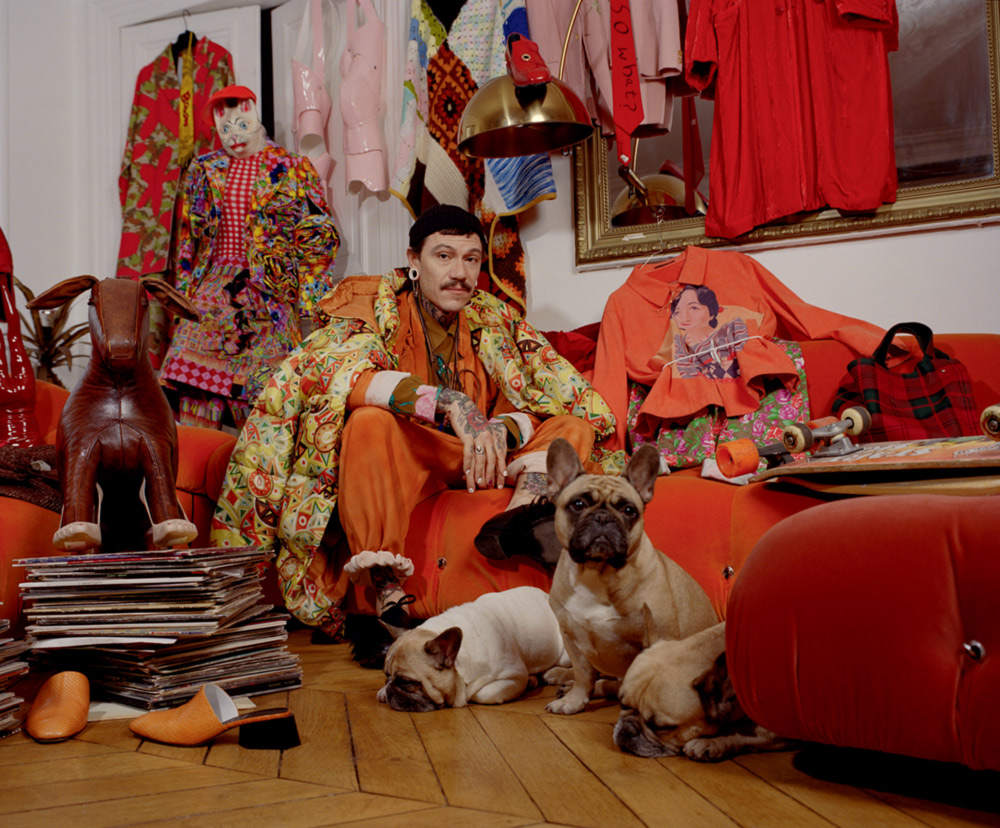
ADRIAN APPIOLAZA AT HOME IN PARIS, JANUARY 2018. HAIR: CHIAO CHENET USING ORIBE/ATOMO. MAKEUP: RAYOUNG KIM. PHOTOGRAPHY ASSISTANT: DANI BASTIDAS.
ADRIAN APPIOLAZA, DESIGNER
COLLECTS: Comme Des Garçons
APPIOLAZA: “I discovered Comme des Garçons in Argentina as a teenager back in 1988. A friend had received as a present a shirt from this, at the time, unknown Japanese brand that, in its intricate design, blew my mind. I became obsessed. I’m still obsessed, constantly searching for new pieces. Every two weeks, I find something worth adding to the archive. Some of my most prized pieces are from the designer Rei Kawakubo’s ‘Body Meets Dress, Dress Meets Body’ spring 1997 collection, and the ‘bag lady/Hiroshima chic’ era of the early 1980s. I love the constant sense of surprise and the constant lesson in design—artistry without pretentiousness. The brand has survived through the years without losing or jeopardizing its deep creative roots.”
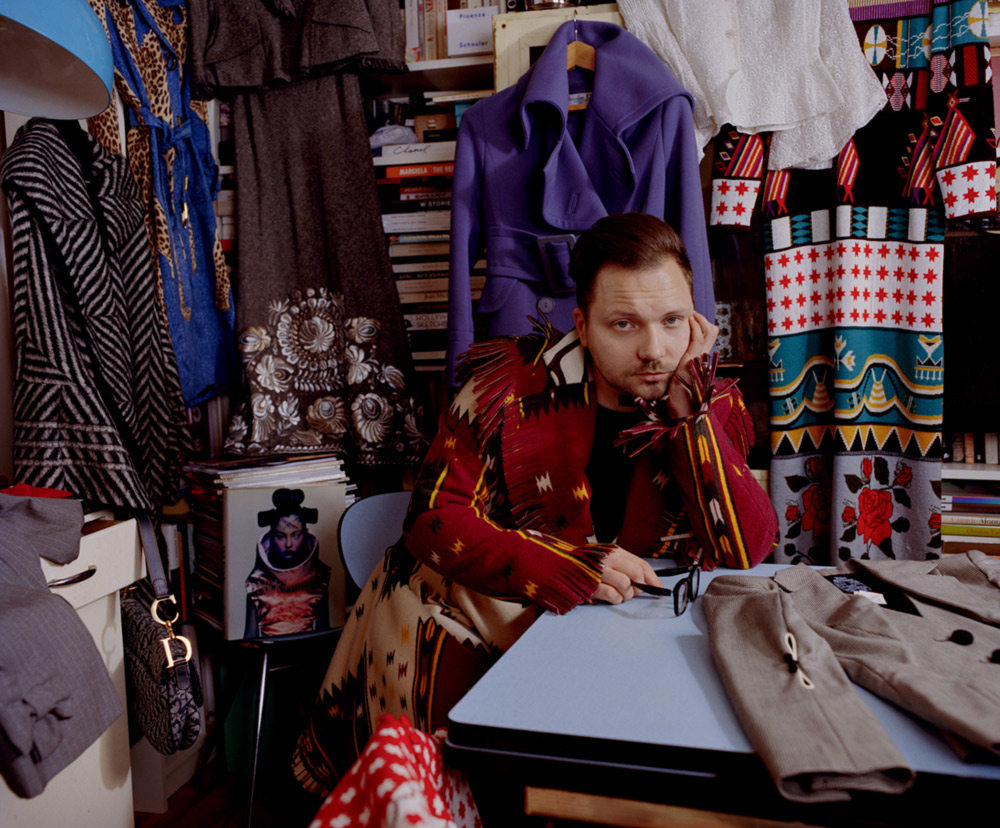
ALEXANDER FURY AT HOME IN LONDON, DECEMBER 2017. HAIR: ALFIE. PHOTOGRAPHY ASSISTANT: ANDRE LAING.
ALEXANDER FURY, JOURNALIST
COLLECTS: John Galliano
FURY: “As a 12-year-old kid in the north of England, I remember seeing Galliano’s work and being utterly captivated—moved, really. I remember precisely seeing an image of Carla Bruni wearing a black-and-white dress from the fall/winter 1995 collection—a show staged in a warehouse filled with fake snow and mocked up to look like the rooftops of Spain, where attendees filed through a wardrobe to enter fashion’s Narnia. She was standing in a snowdrift, with this amazing dress and incredible hair and makeup, and it looked like nothing I’d ever seen before, certainly like no other fashion images. There’s something about it that spoke innately to my own sensibilities: this wonderful, elegiac fantasy of fashion, taking elements from the past but making them incredibly contemporary and relevant and new. And the best is possibly yet to come. How thrilling is that?”
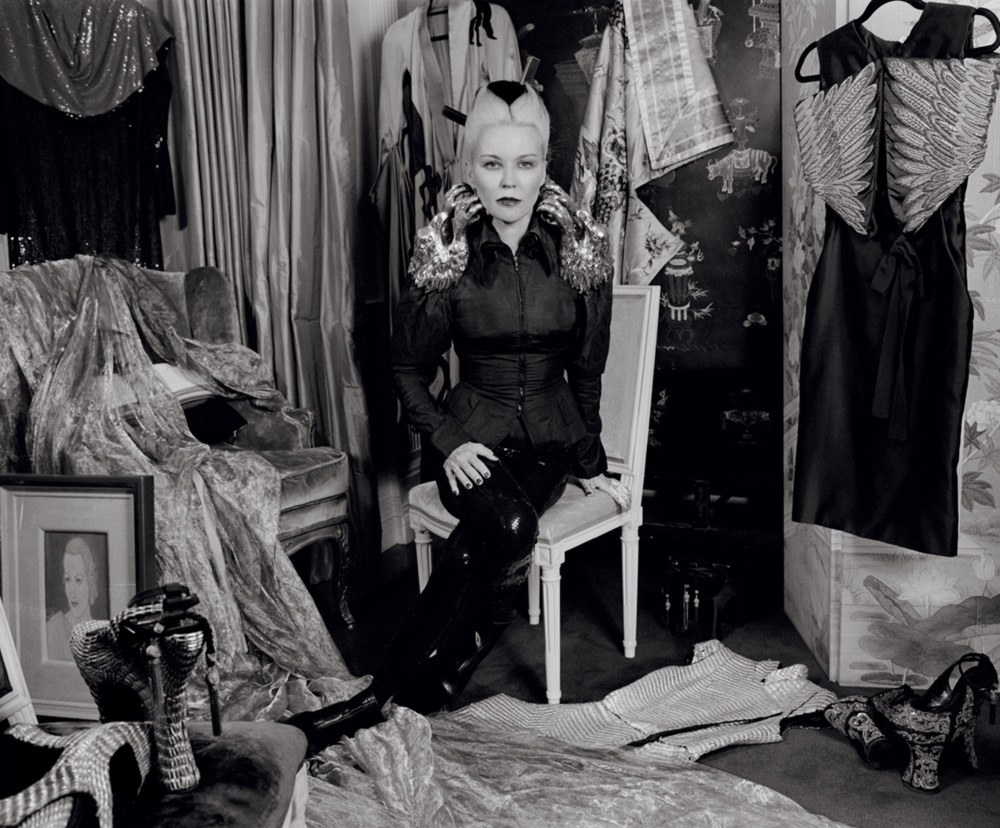
DAPHNE GUINNESS AT HOME IN LONDON, DECEMBER 2017. HAIR AND MAKEUP: TOM BERRY. PHOTOGRAPHY ASSISTANT: TOMO INENAGA.
DAPHNE GUINNESS, MODEL AND MUSICIAN
COLLECTS: Alexander McQueen
GUINNESS: “I came across his work before I met him, seeing it worn by [the late fashion editor] Isabella Blow. It’s rare to behold a new talent who speaks to you so directly—I instantly wanted to meet the maker of those clothes. A kimono I was wearing from one of his first collections was the catalyst for our introduction. He recognized it on my back when I was walking in the street, and he came up to say hello. Lee [McQueen] understood form, really grasped it, and he loved women. His clothes embolden us—they make women feel strong and beautiful, bold and elegant. His sense of balance was unparalleled—still is. His passion for history came alive in his designs. I loved how he resurrected ancient aesthetics and made them his own. The Elizabethan collar is now ubiquitous to the McQueen brand and has been absorbed into the wider fashion scene, but he did it first, and with such sensitivity and grace. His work does not allow its wearer to hide. It holds us up, turns our faces to the wind.”
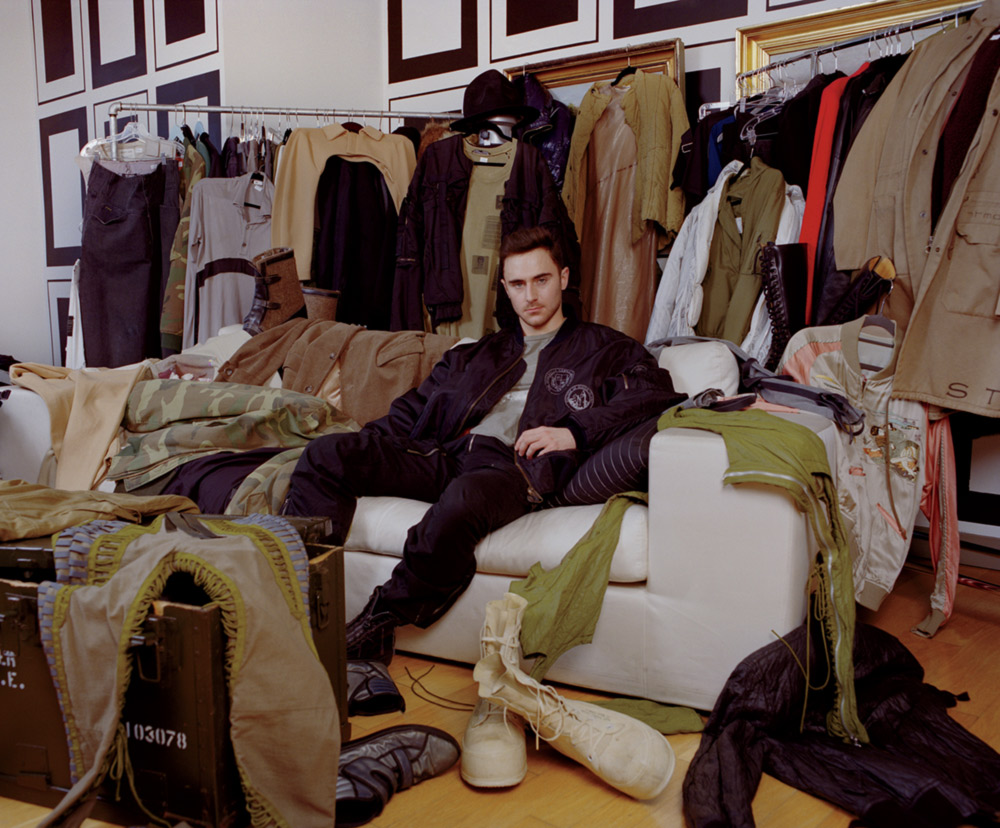
DAVID CASAVANT AT HOME IN NEW YORK, JANUARY 2018. HAIR: TAKASHI YUSA FOR L’ORÉAL/MAM-NYC. PHOTOGRAPHY ASSISTANT: JOSE ALVARADO.
DAVID CASAVANT, STYLIST
COLLECTS: Helmut Lang and Raf Simons
CASAVANT: “I discovered Helmut Lang and Raf Simons when I was around 14, and went crazy buying vintage clothes on eBay. I thought it was cool that people were designing what I thought menswear should really be like. It was a relief, in a way. It’s more than just minimalism—there’s attitude and angst in their clothes, and they don’t give everything away up-front. They hold back and leave you with questions, leave more to be desired. Now I have a whole apartment in downtown Manhattan dedicated to my collection. I rent to a lot of stylists, designers, and celebrities, such as Kanye and Rihanna and Pharrell. I’ve acquired so many things that I’ve actually stopped thinking of my collection in pieces. To me, it’s one whole piece at this point.”

